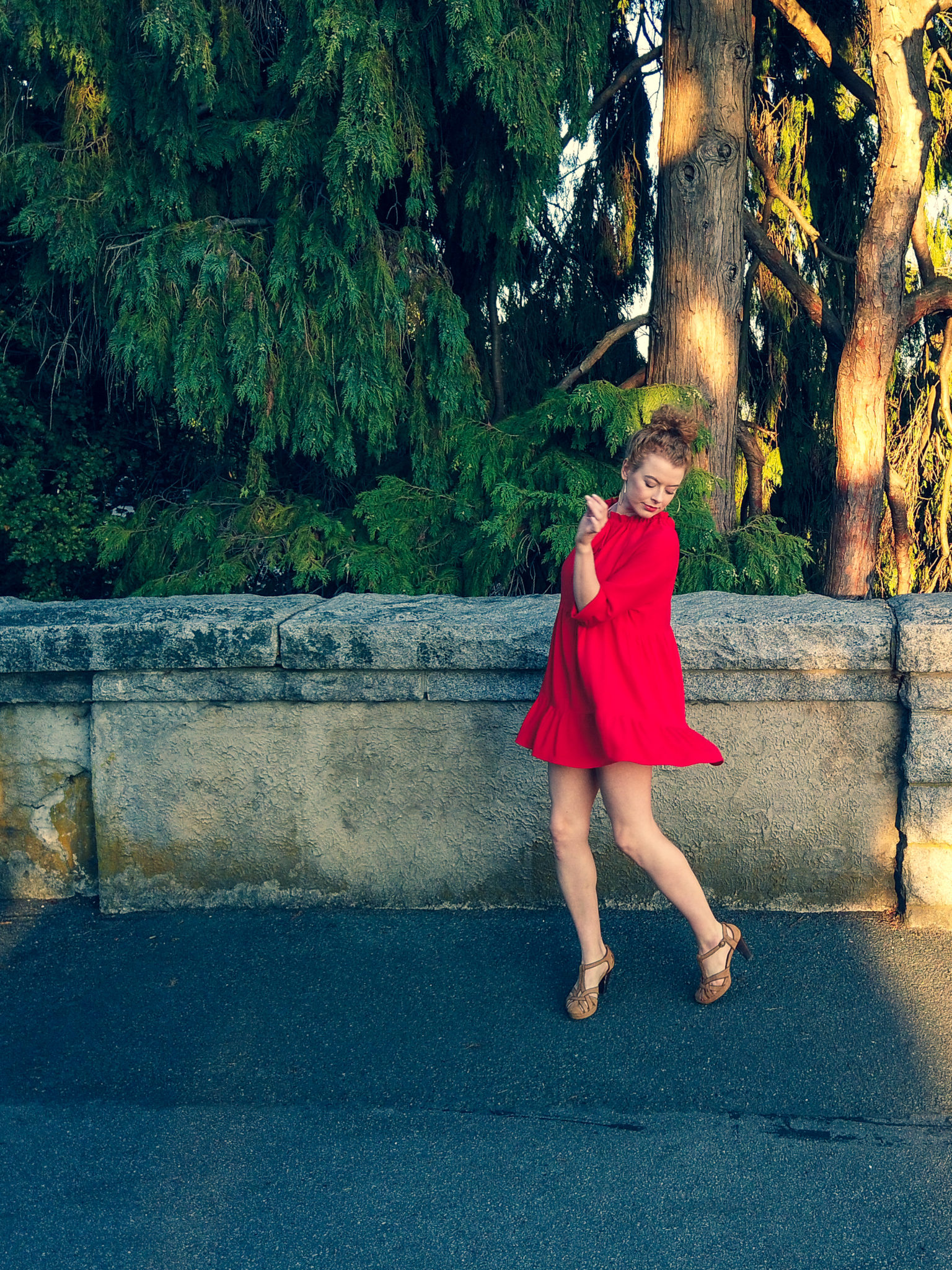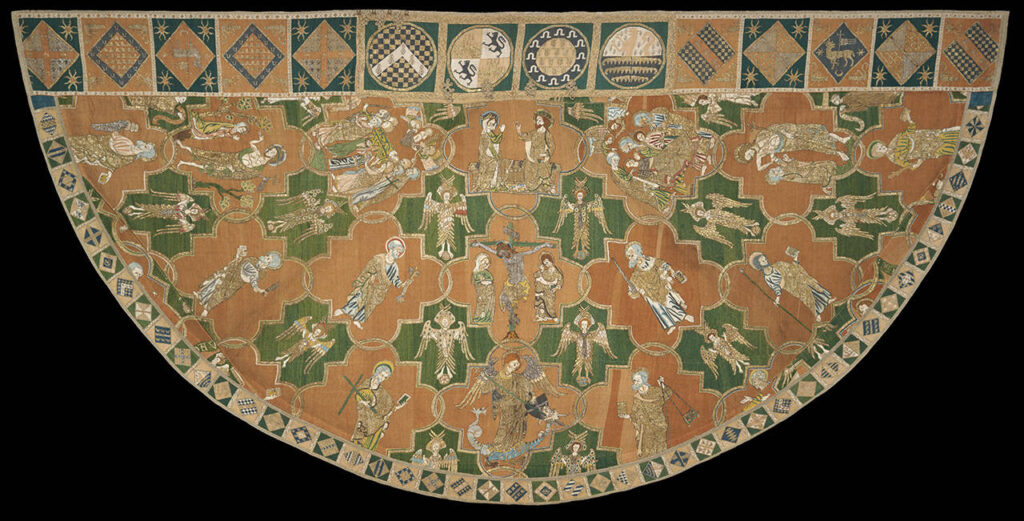
As summer began, I began research into the world of embroidery and its perception as a hobbiest craft. While I had planned to dive into more modern examples, the huge shifts in the status and purpose of embroidery between the Medieval and Victorian Eras caught my eye. Specifically, I was drawn to how society’s views on women and their roles were much broader during Medieval times—largely influenced by the church’s shifting ideologies.
The Height of English Embroidery: Opus Anglicanum
When we travel back in time, between the fall of the Roman Empire and the dawn of the Italian Renaissance, embroidery was seen as an art that equaled painting and sculpture. Men and women alike were skilled in the craft, honing their talents in guild workshops often linked to noble families or religious institutions.
England stood out in this period with its famous “Opus Anglicanum” or “English Work,” produced between 900 and 1400 AD. Renowned for its intricate designs using silk, metal threads, pearls, and even jewels, this form of embroidery was the epitome of luxury. Its artwork wasn’t just for show; it was deeply symbolic, connecting earth to heaven (Parker, 1991) . Whether in the decor of wealthy homes or the vestments of clergy, Opus Anglicanum was the medium through which England expressed its societal and religious values. You can imagine, at this time, the nobility would have had embroidery not only on their clothing, but also on their bedding, curtains and furniture.
The Hands Behind the Art: Monks, Nuns, and Secular Guilds
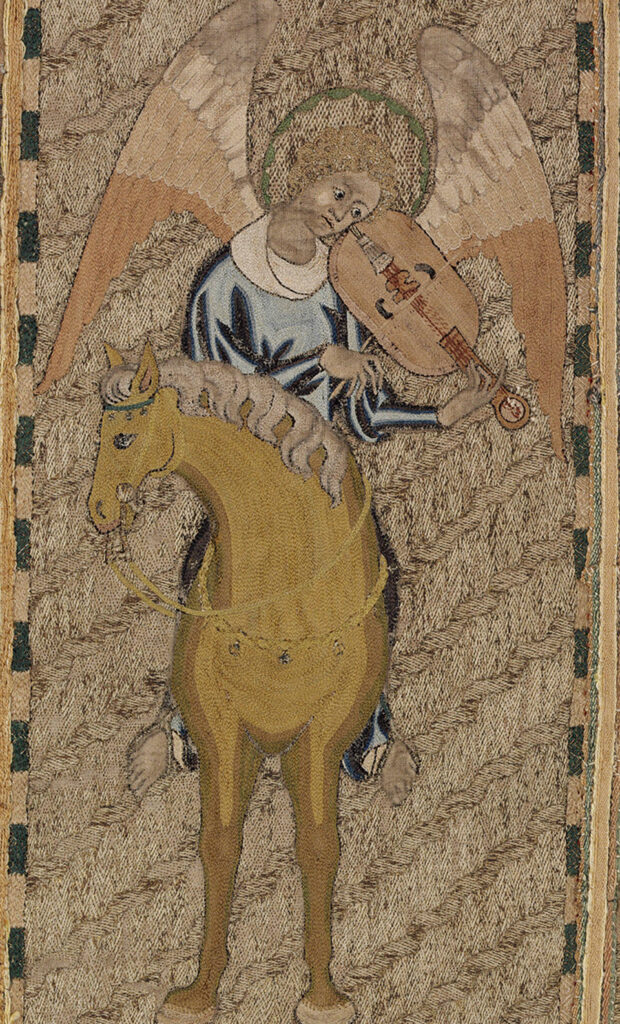
In the workshops of Medieval religious institutions, both monks and nuns played a pivotal role in embroidery. Many of these religious figures hailed from noble backgrounds, where women were often educated in the art of needlework. However, as the Middle Ages wore on, nuns faced increasingly restrictive rules from the church, which began to see embroidery as a distraction from their spiritual commitments.
In the secular world, the landscape was different. Guilds were inclusive spaces where both men and women practiced their craft. Special provisions were even established to allow women to inherit and continue running family embroidery businesses in the event of a husband’s death. Freelance embroiderers also made their mark. Mabel of Bury, a 13th-century embroiderer, is a notable example; she appears 24 times in King Henry III’s expense records between 1239 and 1242. Yet, as the embroidery industry grew and became more commercialized, the historical record becomes conspicuously silent about women’s contributions.
Feminine Ideals in Mediaeval Embroidery
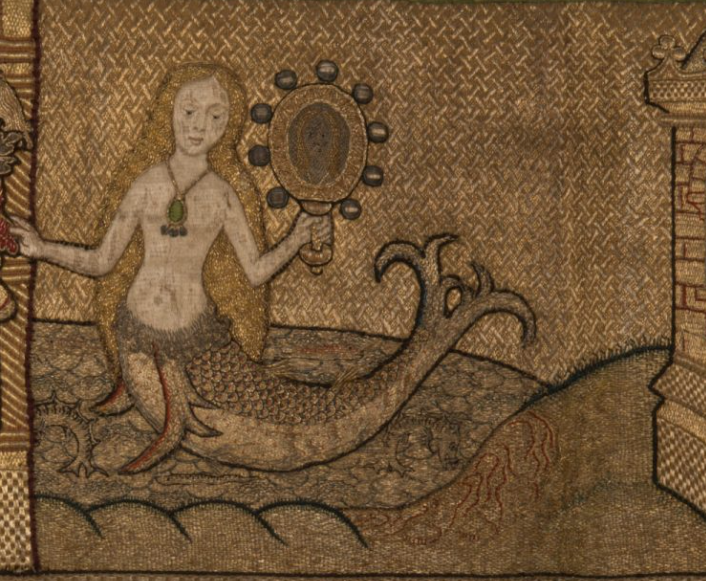
When you dig into the embroidery of the Middle Ages, you’ll notice it’s teeming with religious imagery. But if you really want to get a feel for how society viewed women back then, you’ve got to pay attention to the nitty-gritty details of what’s stitched into those fabrics.
The Role of Childbirth in Embroidery
Childbirth in the Middle Ages was seen as almost mystical, steeped in rituals and often overseen by women. This didn’t sit well with Church leaders, who grew more suspicious over time (Parker, 1991). An autonomous female ritual without being overseen by men, was clearly threatening to the church. You’ll actually find this complex relationship with childbirth captured in embroidery. Take, for example, scenes of the Nativity. Early depictions didn’t just focus on the Holy Family; they included midwives Zelemie and Salomie helping Mary. But as time moved on, those midwives started disappearing from the narrative, symbolizing a shift in how women’s roles were portrayed and valued.
By the 15th century, midwives were missing off the canvas of ecclesiastical art, reflecting their diminished status in society. The Church began preaching that a woman’s pain during childbirth was God-ordained, and that midwives should not be used to ease pain. To cap it off, England even introduced a licensing system for midwives in 1512, painting them with the broad strokes of potential witchcraft.
St. Margaret: The Patron Saint of Strength
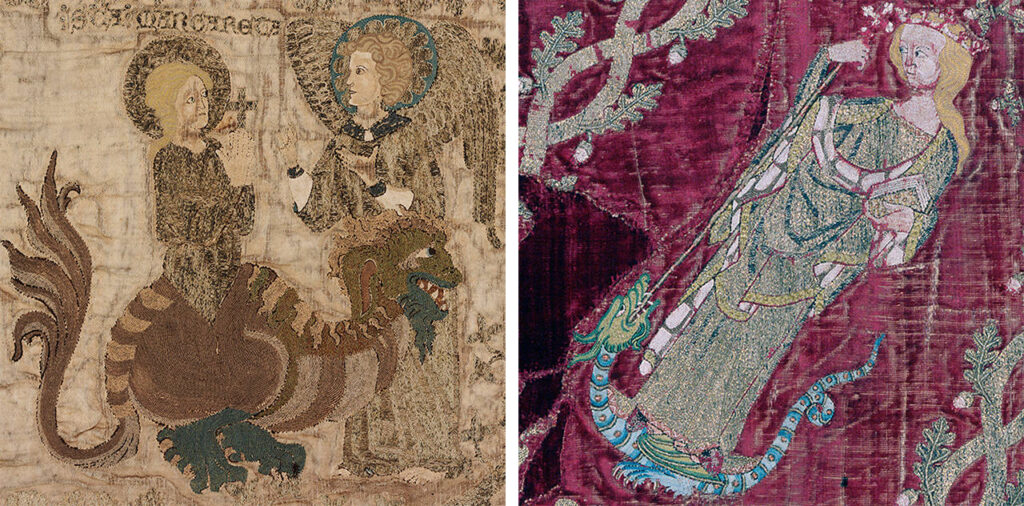
R: The Butler-Bowdon Cope (detail showing St Margaret ‘transfixing’ the dragon), 1330 – 50, England.
Let’s not forget St. Margaret, a big star in Mediaeval embroidery and the patron saint of childbirth. Unlike the mainstream focus on the Holy Trinity, back then people had a direct line of admiration for saints. Each guild even honored its own saint.
St. Margaret was no damsel in distress; she was a fierce woman with a story of bravery. She fought off a dragon and grappled with the devil, for heaven’s sake! You’ll often find her stitched into fabrics, foot firmly placed on a dragon’s head, symbolizing female strength and resilience.
In the world of Opus Anglicanum, a form of high-quality English embroidery, themes of fertility and childbirth were pervasive. The frequent appearances of childbirth scenes, midwives, and St. Margaret give us a vivid snapshot of how these themes were an integral part of life and art during this period.
Embroidered tapestries of the Middle Ages tell us a complex story about women’s roles—both as creators and as subjects. From the guild workshops where women stood as skilled artisans, to the vivid scenes stitched into cloth that depicted women as both strong, useful and fertile, Mediaeval embroidery suggests that women’s roles were multifaceted and valued, far from the limited narratives that later eras would impose.
Changing Persepectives on Embroidered Art and Feminine Identity
The Renaissance: The Division of Arts and Crafts
Sources:
Chasuble (Opus Anglicanum) | British | The Metropolitan Museum of Art. (n.d.). The Metropolitan Museum of Art. https://www.metmuseum.org/art/collection/search/466660
McGrath, C. (2020, April 20). Opus Anglicanum: the beauty of medieval English embroidery. https://www.historiamag.com/opus-anglicanum-the-beauty-of-medieval-english-embroidery/#:~:text=The%20medieval%20records%20for%20the,being%20transacted%20in%20the%20house.
Parker, R. (1991). The Subversive stitch: embroidery and the making of the feminine. Womans Art Journal, 12(1), 45. https://doi.org/10.2307/1358191
Tinker, Z. (2021). Opus anglicanum. Zenzie Tinker. http://www.zenzietinker.co.uk/opus-anglicanum/
Victoria and Albert Museum. (2016, October 11). The making of medieval embroidery [Video]. YouTube. https://www.youtube.com/watch?v=JgN7osGCf5g

